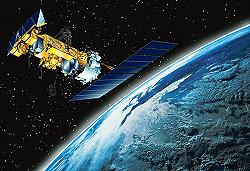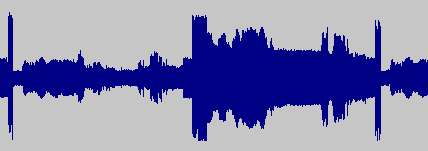


Language:
Español
Fichas técnicas:
GOES
NOAA:
12 14 15
16 17 18
Meteor 3-5
Resurs O1-N4
Feng-Yun:
1 2
Image archive
By satellite
By date
Other information:
Links
Legend
Archive
Bibliography
QFH Antenna
Preamplifier
Wallpapers
Where are we?
 The north American NOAA-18 satellite has a low orbit of the polar type,
resulting in a period of about 102 minutes. The combination of altitude
and the orbit's inclination results in a sun-synchronous orbit: this
makes the satellite pass over the same places on earth at the same
hour of the day.
The north American NOAA-18 satellite has a low orbit of the polar type,
resulting in a period of about 102 minutes. The combination of altitude
and the orbit's inclination results in a sun-synchronous orbit: this
makes the satellite pass over the same places on earth at the same
hour of the day.
NOAA-18 was launched on May 20th, 2005 at 02:22 UTC. It contains a large number of scientific experiments, of which only the meteorological part is of easy use. NOAA-18 was launched with the intention of having an 'afternoon'-satellite, with passes in between NOAA-17 and -12 and -15.
Though the satellite registers images in 5 spectral bands, from visible light to infrarred, the complete information is only available over the high speeds SHF downlink (HRPT on 1690 MHz). The simpler APT doenlink, designed for low-budget reception, is only capable of transmitting two of the 5 spectral bands, and at about 1/4 of the original resolution.

NOAA-18 is a member of the TIROS family of satellites.

| Description | Value | Unit |
| Launch | 2005/05/20 |
|
| Name before launch | NOAA-M |
|
| Actual name | NOAA-18 |
|
| NASA ID | 28654 |
|
| Approx altitude | 872 | km |
| Orbit inclination | 98.78 | degrees |
| Period of the orbit | 102 | min |
| APT frecuencies |
137.9125 137.10 |
MHz |
| HRPT frecuencias |
1698 1707 |
MHz |
| Beacon |
137.35 137.77 |
MHz |